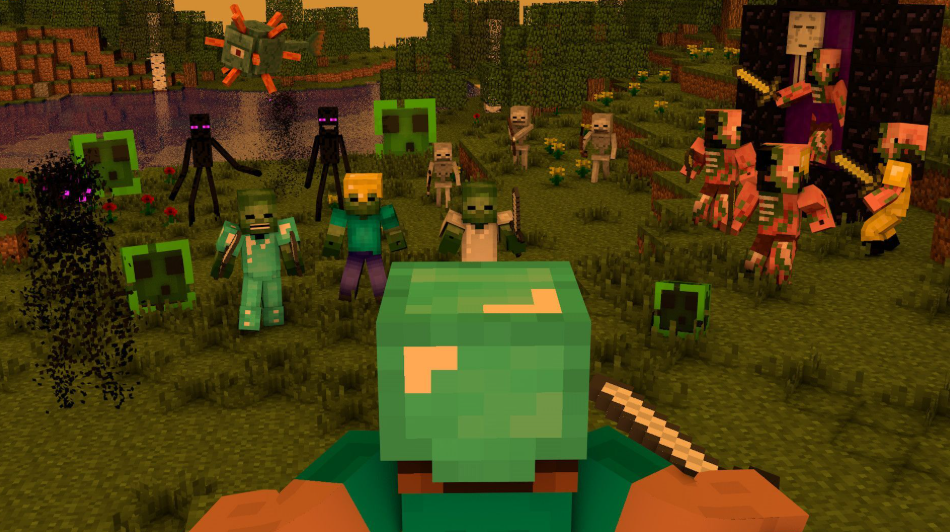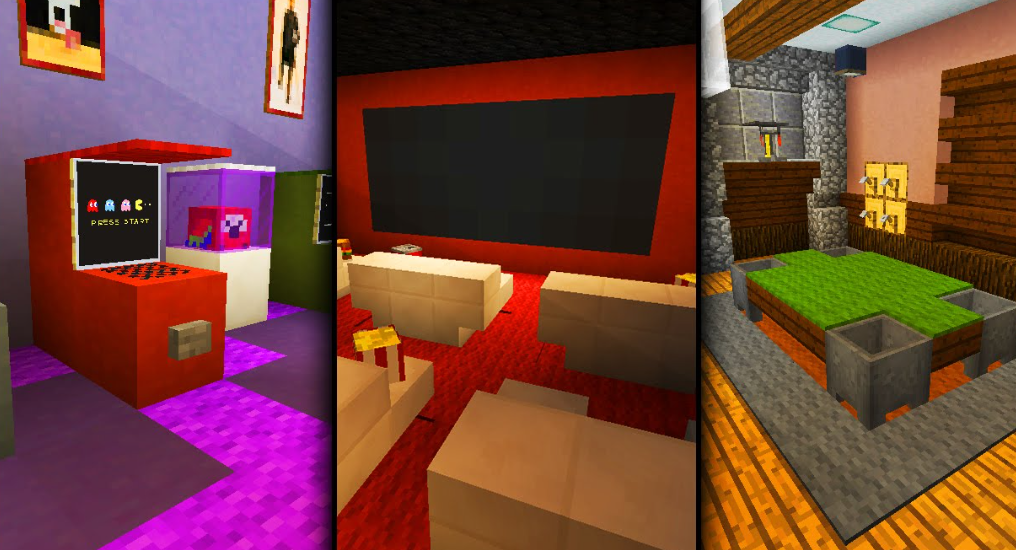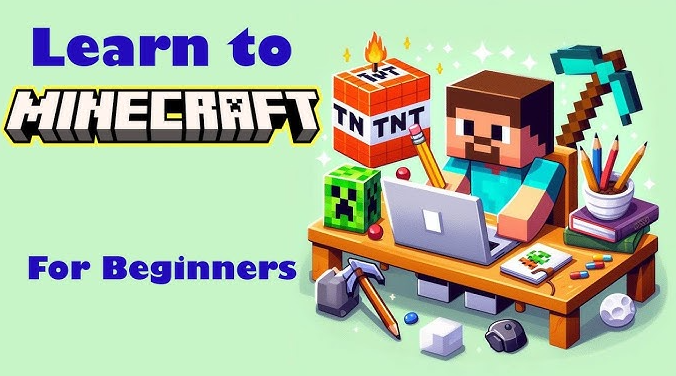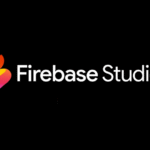Introduction
Minecraft isn’t just a game—it’s a canvas for creativity and innovation. With over 140 million monthly active players, it has become one of the most influential sandbox platforms in gaming history. But beyond surviving mobs or building pixelated castles, Minecraft offers something even more exciting: the ability to create your own custom games inside the game itself.
Whether you’re looking to build a parkour challenge, an adventure quest, or a fully functioning minigame, this guide will walk you through how to make your own game in Minecraft—step by step. No prior coding experience? No problem. With tools like Redstone, command blocks, and creative planning, anyone can become a game designer in Minecraft.
In this beginner-friendly tutorial, you’ll discover everything from idea generation to world-building, mechanics, and sharing your game with others. Let’s unlock your creative potential and turn your Minecraft world into a playable experience for all.
Why Create Your Own Game in Minecraft?
Minecraft is more than just a game—it’s a limitless creative platform. Whether you’re a casual builder or an aspiring game designer, creating your own game inside Minecraft opens the door to innovation, learning, and even monetization. With its open-ended mechanics, sandbox environment, and flexible tools like command blocks and Redstone, Minecraft empowers players to go beyond survival and storytelling—it allows them to become creators of unique gaming experiences.
Designing a custom game mode in Minecraft doesn’t require advanced coding knowledge. From simple parkour maps and PvP arenas to intricate puzzle games and RPGs, players have built thriving communities around their creations. This is where the high-CPC keyword “minecraft custom game mode” becomes relevant—it reflects the growing interest in turning personalized gameplay into viral content or multiplayer adventures.
Creating your own game in Minecraft also develops problem-solving, logic-building, and project planning skills. It’s particularly beneficial for students, educators, and content creators looking for engaging educational tools or YouTube series ideas.
In today’s digital age, custom Minecraft games also offer a pathway to recognition and revenue. Many YouTubers and server owners began by asking, “how to make your own Minecraft game”—and turned that curiosity into a career. Sharing your maps online or hosting mini-games on multiplayer servers can attract large audiences, helping you stand out in the global gaming community.
So, why create your own game in Minecraft? Because it’s the perfect blend of creativity, community, and opportunity—all inside a game you already love.
Understanding Minecraft Game Modes and Mechanics
Before you start building your own Minecraft game, it’s essential to understand the core game modes and mechanics that define how players interact with the world. Minecraft offers several built-in game modes, each tailored for a different style of play—and selecting the right one is crucial when designing a custom game experience.

Core Minecraft Game Modes
- Survival Mode: Players gather resources, manage health and hunger, and face hostile mobs. Great for adventure-based games or survival challenges.
- Creative Mode: Unlimited resources and flight capabilities make this the ideal choice for designing and testing your custom maps and mechanics.
- Adventure Mode: Tailored for custom games. Players can’t break or place blocks unless allowed by the map creator. This is perfect for puzzle games, story-based experiences, or “minecraft custom game mode” setups.
- Spectator Mode: Used mainly for testing or observing other players without interacting. Helpful for playtesting.
Understanding these modes helps you align your gameplay objectives with the right environment. For example, if you’re building a parkour game, use Creative Mode for design, but set the final gameplay to Adventure Mode to control player interactions.
Game Mechanics You Can Control
Using tools like Redstone, command blocks, and structure blocks, you can introduce logic systems, teleportation mechanics, timers, scoring, and more. These are the foundational elements in how to make your own Minecraft game and allow you to guide players through challenges, rules, and rewards.
Mastering these mechanics means you’re not just building structures—you’re crafting interactive experiences. Whether it’s a simple mini-game or a full-fledged RPG, your understanding of game modes and mechanics forms the backbone of your design success.
Tools You’ll Need to Get Started
Creating your own game in Minecraft doesn’t require expensive software or professional programming skills—just the right tools within the Minecraft ecosystem. Whether you’re designing a simple mini-game or a full-scale adventure map, having the proper setup will make your development process smoother and more creative.
1. Minecraft Java Edition (Recommended)
While you can design custom games in both Bedrock and Java versions, the Java Edition offers greater flexibility, especially with command blocks, data packs, and mods. It’s the preferred version for creators learning how to make your own Minecraft game.
2. Command Blocks
These are the foundation of custom game mechanics. You can create teleportation, timers, enemy spawns, scoring systems, and more—without writing external code. Simply enable cheats in your world to access them.
3. Redstone Components
Think of Redstone as Minecraft’s version of wiring or logic circuits. It allows you to create traps, sensors, doors, and complex machinery, making it essential if you’re wondering how to make a game in Minecraft using Redstone.
4. Structure Blocks (Optional)
These are useful for saving and loading large builds. Great for replicating game areas, especially in multiplayer settings.
5. Mods & Plugins (Optional)
If you want to extend your design possibilities, mods like Minecraft Forge or Fabric offer access to custom items, entities, or even UI enhancements. This is especially helpful when exploring minecraft mod games or more complex logic.
With these tools at your fingertips, you’re well-equipped to bring your game concept to life, step by step.
Planning Your Game: Concept to Design
Before placing your first block or writing a single command, you need a solid game concept. Planning is a crucial step that sets the foundation for your custom Minecraft game. Whether you’re designing a simple minigame or a fully immersive adventure, a clear plan ensures the project stays fun, functional, and achievable.
Choose a Game Genre
Start by deciding what type of game you want to build. Here are a few popular options:
- Parkour Challenges – test player agility with obstacle courses.
- PvP Arenas – set up competitive combat zones.
- Puzzle Games – involve levers, buttons, and logic circuits.
- Adventure Quests – story-driven experiences using command blocks and dialogue.
This is where long-tail keywords like “minecraft game ideas to build” can spark inspiration. Browse community maps or YouTube videos to see what’s trending or missing.

Define Objectives and Rules
Outline the goal: Is it to reach a location, defeat enemies, or solve a mystery? Also decide on constraints, such as time limits, limited inventory, or special abilities. Think of this as scripting the “win condition” of your game.
Sketch Your Map or Flow
Visual planning helps, especially if your game involves multiple stages or checkpoints. Draw out areas, note Redstone logic, and consider how players will transition from one phase to another.
A well-thought-out concept transforms an idea into an engaging experience. And remember—every successful Minecraft creator, from hobbyists to influencers, starts with a solid game plan.
Building the Game World
Now that you’ve planned your concept, it’s time to bring your vision to life by building the game world. This is where your creativity shines and your Minecraft design skills take center stage.
Start in Creative Mode
To streamline the building process, always begin in Creative Mode. This allows you to fly, access unlimited blocks, and test mechanics freely. Once the build is ready, you can switch the world to Adventure or Survival depending on your game type.
Terrain & Environment Design
Decide if your game requires natural terrain, custom landscapes, or a completely flat world. Use in-game tools or third-party software like WorldEdit for large-scale shaping. For PvP or parkour maps, flat worlds or floating islands often work best. For adventure maps, diverse biomes and cave systems add realism.
Use Thematic Blocks & Structures
Consistency matters. Choose blocks that fit your game’s theme—icy spikes for a winter survival, nether bricks for dungeon runs, or quartz for sci-fi mazes. Add decorative elements like lanterns, signs, armor stands, or NPCs to enhance immersion.
Set Spawn Points & Boundaries
Use /spawnpoint and /setworldspawn commands to define where players begin. Create invisible walls or use bedrock to set boundaries and guide the player’s journey.
Optimize for Gameplay
Avoid cluttered builds that confuse players. Ensure navigation is intuitive, jumps are spaced correctly, and each area supports your game’s logic and rules.
At this stage, your Minecraft game becomes tangible—visually impressive and ready for mechanics to be layered on top.
Redstone & Command Blocks: The Heart of Game Logic
Once your game world is built, it’s time to add interactivity—and that’s where Redstone and command blocks come in. These tools are the backbone of custom game mechanics in Minecraft, transforming your map from a static environment into a fully playable experience.
Redstone: Minecraft’s Electrical Circuitry
Redstone allows you to create logic-based systems such as doors, traps, pressure plates, timers, and checkpoints. It’s essential for games that require physical interaction—think of parkour pressure pads, battle arena doors, or puzzle triggers. By combining Redstone with pistons, observers, and repeaters, you can craft complex logic chains without a single line of code.
Command Blocks: Advanced Game Control
Command blocks take things further by enabling scripting-like control over the game. Want to teleport a player, spawn mobs, change weather, or display messages? Command blocks can do all that—and more. This is a vital component when learning how to make your own Minecraft game, especially if your design includes custom rules, scoring, or event triggers.
Example commands:
- /tp @p 100 64 -50 – teleport player
- /title @a title {“text”:”Level Complete!”} – display custom messages
- /scoreboard – track points and progress
Combining Logic for Seamless Play
By integrating Redstone with command blocks, you can create checkpoints, dynamic difficulty systems, or even minigame cycles. This is how professionals and YouTubers develop engaging Minecraft custom game modes that feel polished and immersive.
In short, mastering these tools gives life to your Minecraft game—turning your idea into a fully interactive adventure.
Adding Objectives, Rules & Win Conditions
Every great Minecraft game needs clear objectives, defined rules, and satisfying win conditions. These elements guide the player’s journey, create challenges, and provide a sense of achievement upon completion. Whether you’re making a puzzle map, PvP arena, or parkour challenge, structuring gameplay with intention is key.
Define the Core Objective
Start by asking: What is the player supposed to do?
- Reach a destination?
- Defeat enemies?
- Solve a series of puzzles?
- Collect hidden items?
Once you’ve defined your goal, reinforce it with visual cues, signs, or in-game messages using /title or /tellraw commands.
Establish the Rules
Rules ensure fair play and keep the game balanced. You might:
- Limit player movement with invisible barriers.
- Restrict inventory or health regeneration.
- Prevent block breaking using Adventure Mode.
Command blocks and scoreboards can enforce these rules dynamically. For example, using /clear can reset inventories, or /gamemode adventure can prevent unintended actions.
Set Win/Loss Conditions
Your game should end with a defined success or failure trigger. Use command blocks to:
- Detect a score threshold (/scoreboard players test)
- Check location (/execute if entity @p[x=..,y=..,z=..])
- End the game with a message or teleport
Don’t forget to reward players! You can trigger fireworks, display a custom “You Win!” screen, or unlock a new level.
Incorporating clear goals and conditions not only improves gameplay—it helps your custom game feel polished, professional, and share-worthy.
Testing and Tweaking Your Game
After building your world and programming the logic, the next crucial step is testing and refinement. A great Minecraft game isn’t just about flashy builds or clever commands—it’s about smooth, intuitive gameplay. Testing helps identify flaws, balance difficulty, and ensure that players understand and enjoy your game.
Solo Testing
Begin by playing through the game yourself, step by step. Pay attention to:
- Clarity of objectives and instructions
- Functionality of Redstone circuits and command blocks
- Smooth transitions between levels or events
Use spectator mode to observe Redstone behavior or hidden mechanisms. Don’t hesitate to use /kill, /tp, or /gamemode commands to move quickly during debugging.
Invite Playtesters
Once you’ve completed solo testing, ask friends or community members to play your map. This is essential because what seems obvious to you may be confusing to others. Encourage feedback on:
- Difficulty balance
- Flow and pacing
- Game-breaking bugs or exploits
You can host a LAN world, Realms server, or upload your world to file-sharing platforms.
Tweak Based on Feedback
Adjust Redstone timing, command block triggers, player spawn points, or map layout based on player input. This is especially important if you’re building a competitive minecraft custom game mode—balancing is key to fairness and replayability.
Final Touches
After testing, add polish: clear signage, sound effects, ambient music, or rewards. These small tweaks can elevate your game from functional to fantastic.
Thorough testing ensures your Minecraft creation delivers a smooth, enjoyable experience—just like the pros.
Sharing or Hosting Your Minecraft Game
Once your game is tested and polished, it’s time to share it with the world. Whether you’re launching a public map or hosting a private event with friends, there are several ways to distribute and promote your custom Minecraft game.
Upload Your World Save
The easiest way to share your game is by uploading the world folder to a file-sharing platform like Google Drive, Dropbox, or MediaFire. Provide clear instructions for installation:
- Locate the world save in your .minecraft/saves directory.
- Compress it into a .zip file.
- Share the download link along with a brief description and game rules.
Platforms like Planet Minecraft, MinecraftMaps.com, or CurseForge allow you to publish your map and reach a wider audience.
Host on Minecraft Realms or Private Server
If you want real-time multiplayer experiences, consider hosting your game on:
- Minecraft Realms – a paid, user-friendly option for small groups.
- Third-party servers – gives you more control, especially for PvP, RPG, or minecraft mod games.
- LAN – perfect for local testing or home sessions.
Install plugins or use command block scripts to manage player roles, game resets, and scoring.
Promote via Content Creation
Create a trailer, gameplay video, or tutorial. Share it on YouTube, Reddit, or Minecraft forums. Keywords like how to make your own Minecraft game and minecraft custom game mode are highly searched—capitalize on them in your titles and descriptions.
Sharing your creation not only builds your reputation—it inspires others and contributes to the vibrant Minecraft creator community.
Bonus: Want to Create a Game Like Minecraft?
If designing custom games within Minecraft has sparked your creativity, you might be wondering: Can I make a full game like Minecraft from scratch? The answer is yes—and many aspiring developers start exactly this way.
Creating a game like Minecraft means moving beyond in-game tools and learning game development platforms such as Unity, Unreal Engine, or Godot. These engines offer complete control over graphics, mechanics, and multiplayer systems. With some programming knowledge (typically C# or Python), you can build voxel-based games, sandbox environments, or even survival experiences inspired by Minecraft’s core ideas.
This path is ideal for those who’ve mastered how to make your own Minecraft game and want to take their skills to the next level. There are countless tutorials and open-source projects to guide you—many of which replicate Minecraft-like physics, inventory systems, and procedural terrain.
You can even monetize your game via platforms like Steam, itch.io, or mobile app stores.
In short, Minecraft can be more than a playground—it can be your launchpad into full-scale game development. Whether you’re a student, hobbyist, or future indie developer, the skills you gain in Minecraft can be the first step toward building the next big game.
Conclusion
Creating your own game in Minecraft is a rewarding journey that blends creativity, logic, and storytelling. From planning your concept and designing the world to mastering Redstone and command blocks, each step brings you closer to launching a unique, interactive experience. Whether you’re building a simple parkour map or a complex adventure quest, Minecraft offers all the tools you need—no programming degree required.
With increasing interest in Minecraft custom game modes and high-value keywords like how to make your own Minecraft game, this creative pursuit also opens doors to sharing your work with the global community—or even monetizing your designs.
So, don’t just play Minecraft—use it as a platform to express your imagination, develop real-world skills, and inspire others. Start small, test often, and most importantly—have fun crafting your own Minecraft game from the ground up.



